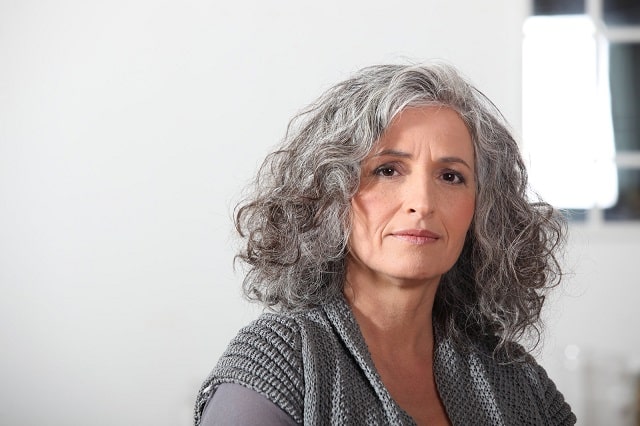As we get older, it’s natural for our skin and bodies to change in ways that can make us look older than our actual age. However, there are habits and practices you can adopt to help slow down visible signs of aging and maintain a more youthful appearance. Here are 7 things that can help make you look younger:
1. Get Enough Sleep
Not getting sufficient quality sleep can take a major toll on your appearance over time. Lack of sleep leads to premature wrinkles, under-eye bags and dark circles, dull skin, and an overall tired look. Aim for 7-9 hours per night to allow your body to rejuvenate skin cells and produce collagen that keeps skin looking plump and smooth.
2. Stay Hydrated
Drinking plenty of water is essential for keeping skin firm, supple, and radiant rather than dry, flaky, and wrinkled. Mild dehydration can quickly zap skin of moisture, volume and luminosity while exaggerating the look of fine lines and wrinkles. Sip water throughout the day and limit diuretics like coffee.
3. Protect Your Skin from the Sun
One of the top contributors to visible signs of aging is unprotected exposure to UV radiation from the sun. Harmful UV rays penetrate deep into skin, breaking down collagen and elastin while creating free radicals that damage skin cells over time. This leads to premature wrinkles, age spots, sagging skin, and rough texture.
Prevent this by applying a broad spectrum sunscreen of SPF 30 or higher every day, seeking shade, and wearing protective clothing and accessories. Also avoid tanning beds, which expose you to concentrated UV radiation.
4. Eat Foods Rich in Antioxidants
The visible effects of aging are often due to oxidative stress and inflammation caused by unstable molecules called free radicals. Antioxidants help neutralize these free radicals and reduce oxidative damage that ages skin prematurely.
Load up on fruits and vegetables like berries, leafy greens, tomatoes, avocados, nuts, and green tea which are packed with antioxidants like vitamins A, C, and E along with beneficial plant compounds.
5. Exercise Regularly
In addition to keeping your body strong, fit and healthy, regular exercise promotes better circulation that delivers nutrients to skin cells and boosts collagen production to keep skin tight and firm. It also releases endorphins that give skin a youthful post-workout glow.
Aim for 30-60 minutes of exercise like walking, swimming, cycling or strength training most days of the week. Your complexion will look more radiant and you’ll avoid sagging facial muscles that can make you look older.
6. Manage Stress Levels
High levels of stress cause the body to produce excess cortisol which breaks down collagen and elastin in skin over time. This leads to accelerated wrinkles, sagging skin, adult acne, dull complexion and other visible effects of premature aging.
Engage in stress-relieving activities like meditation, yoga, deep breathing exercises, journaling, or whatever helps calm your mind and lower stress hormones. Your skin will stay more resilient and youthful-looking as a result.
7. Consider Anti-Aging Treatments
While lifestyle habits support maintaining a youthful look from the inside-out, certain anti-aging treatments and procedures can help enhance and optimize your results on the outside as well.
Professional treatments like chemical peels, laser treatments, microneedling and certain cosmetic injections can reduce wrinkles, tighten skin and restore plumpness and volume in a more dramatic way than over-the-counter skincare products. Just be sure to get treatments from a qualified provider.
In addition to these 7 practices, other habits and behaviors that can help take years off your face and body include:
• Exfoliating regularly to remove dead, dull surface skin cells
• Using SPF in your daily skincare regimen to shield against UV rays
• Getting enough vitamin C to boost collagen production
• Avoiding excessive sugar and processed foods that age you prematurely
• Using retinol or retinoids to stimulate cell renewal and prevent wrinkles
• Staying out of pollution and smog that damages and dries out skin
• Quitting smoking to avoid premature wrinkles and dull complexion
• Maintaining good posture to prevent sagging facial muscles READ FULL STORY HERE>>>CLICK HERE TO CONTINUE READING>>>
With the proper lifestyle and anti-aging treatments, it’s definitely possible to look years younger than your chronological age. Here’s a deeper look into how each of the top 7 practices can help:
1. Sleep is critical for skin’s repair and regeneration processes, including building new collagen to keep skin firm. Getting quality sleep also reduces inflammation that leads to wrinkles and acne.
2. Proper hydration improves skin’s elasticity, plumpness, and radiant glow while flushing out toxins that can dull skin’s appearance. Even mild dehydration shows up as more pronounced lines and sagging skin tone.
3. UV exposure causes most of the visible signs we associate with aging by creating free radicals that break down proteins like collagen and elastin while mutating skin cells. Diligent sun protection preserves skin’s youthful qualities.
4. Antioxidants like vitamins A, C, and E help neutralize those harmful free radicals from UV exposure or other sources while supporting skin’s collagen production for a smoother, more supple look and feel.
5. Aerobic exercise increases blood flow to deliver nutrients to skin cells while also optimizing skin’s elasticity and tone. Weight training builds muscle to provide structure and volume that helps offset sagging skin.
6. Stress hormones like cortisol accelerate the breakdown of collagen and trigger inflammation that leads to premature fine lines, wrinkles, and dull skin. Managing stress keeps those in check.
7. Options like mild chemical peels, FDA-approved laser treatments and injection procedures can effectively resurface skin, stimulate collagen production and add volume in areas with wrinkles or lax skin texture.
With the right approach, it’s absolutely realistic to look 5, 10 or even 15 years younger than your biological age through lifestyle habits and professional anti-aging tactics that optimize skin’s youthful qualities.

However, it’s important to have reasonable expectations about aging and avoid falling for “anti-aging miracles” marketed in gimmicky ways. While these practices can help preserve and enhance a more youthful appearance, aging is ultimately inevitable.
The most sustainable approach is to embrace lifestyle changes that support longevity and healthy, gradual aging rather than chasing unnatural and fleeting ideas about avoiding the aging process entirely. Focus on aging gracefully through low-stress living, smart skincare, and making daily choices that nourish your body from the inside out.
With consistency and commitment to these practices, you’re sure to turn heads by looking vibrant, refreshed and years younger than peers who aren’t prioritizing healthy aging strategies. Invest in yourself and your long-term self by maintaining habits that keep you looking and feeling your best at every age!


 IN-THE-NEWS11 months ago
IN-THE-NEWS11 months ago
 SPORTS7 months ago
SPORTS7 months ago
 METRO10 months ago
METRO10 months ago
 IN-THE-NEWS10 months ago
IN-THE-NEWS10 months ago
 IN-THE-NEWS11 months ago
IN-THE-NEWS11 months ago
 SPORTS7 months ago
SPORTS7 months ago
 HEALTH & LIFESTYLE10 months ago
HEALTH & LIFESTYLE10 months ago
 METRO10 months ago
METRO10 months ago



